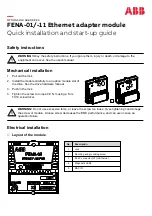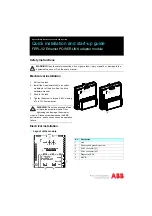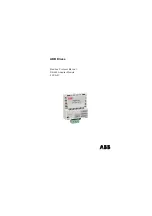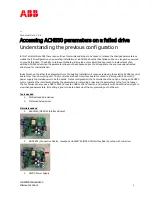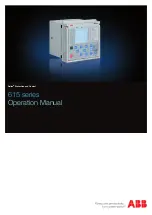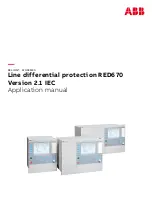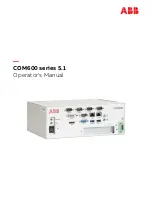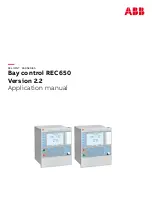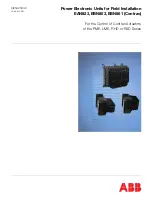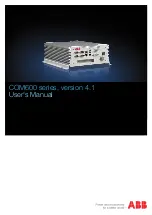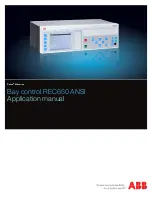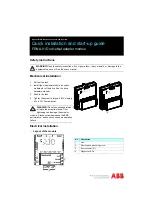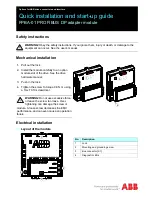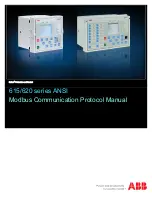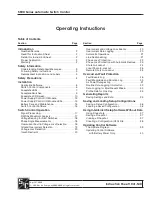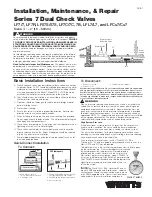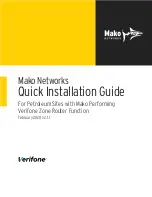
2
DKRCI.PI.GB0.A7.77 / 520H0444
© Danfoss A/S (MWA), 2015-01
ENGLISH
Installation
Refrigerants
Applicable to all common non-flammable
refrigerants, including R717 and non-
corrosive gases/liquids dependent on
sealing material compatability.
As standard the float ball is designed for
R717 with a density of 500 through to
700 kg/m
3
. For refrigerants, which have a
density outside this range please contact
Danfoss.
Flammable hydrocarbons are not
recommended. The valve is only
recommended for use in closed circuits. For
further information please contact Danfoss.
Temperature range
HFI : –50/+80°C (–58/+176°F)
Pressure range
The float valves are designed for a max.
working pressure of 25 bar g(363 psi g).
Strength test without floatball.
Installation
Mount the float valve horizontally with the
outlet connection pos. A (fig. 1) vertically
downwards.
The flow direction has to be from the
flanged inlet connection as indicated with
the arrows (fig. 1).
The valve is designed to withstand a high
internal pressure. However, the piping
system should be designed to avoid liquid
traps and reduce the risk of hydraulic
pressure caused by thermal expansion. It
must be ensured that the valve is protected
from pressure transients like “liquid
hammer” in the system.
Welding
Remove the float assembly before welding
as follows:
- Dismount the end cover and remove the
transport packing.
After welding and assembly, the
transport packing should be put back
into place, until the final destination of
the unit is reached.
- Unscrew the screw pos. C (fig. 1) and lift
up the float assembly from the outlet.
- Weld the outlet connection pos. A (fig. 1)
into the plant as shown in fig. 2.
Only materials and welding methods,
compatible with the valve housing
material, must be welded to the valve
housing. The valve should be cleaned
internally to remove welding debris on
completion of welding and before the
valve is reassembled.
Avoid welding debris and dirt in the
housing.
NB!
When demand is heavy at low
temperature operation, we recommend to
check the velocity in the outlet branch. If
necessary the diameter of the pipe which is
welded on to the outlet branch pos. A
(fig. 1) can be increased.
The valve housing must be free from
stresses (external loads) after installation.
Assembly
Remove welding debris and any dirt from
pipes and valve body before assembly.
Replace float assembly in the outlet branch
and tighten the screw pos. C (fig 3). Check
that the float assembly has gone all the
way down the outlet connection and that
the float ball is positioned in the middle of
the housing, so it can move without any
restriction.
End cover with purge valve and pipe is
remounted in the housing.
NB!
The ventilating pipe pos. E (fig 3) has to
be placed vertically up-wards.
In case an insert with a slide (version before
2007) replaced by a present version, an
extra threaded hole needs to be made in
the outlet connection A to fix the screw
(fig.1)
Tightening
Use a torque wrench to tighten the screws
pos. F (fig. 3). Tighten with torque of 183
Nm (135 Lb-feet).
Colours and identification
The HFI valves are painted with a red oxide
primer in the factory. The external surface
of the valve housing must be prevented
against corrosion with a suitable protective
coating after installation and assembly.
Protection of the ID plate when repainting
the valve is recommended.
Maintenance
Purging of incondensable gases
Incondensable gases might accumulate
in the upper part of the float valve. Purge
these gases by means of the purge valve
pos. G (fig. 4).
Replacement of complete float assembly
(adjusted from factory), follow the steps
below:
1)
NB!
Before openening up the float
valve, the system must be evacuated
and the pressure equalized to
atmospheric pressure by using the
purge valve pos. G (fig. 4)
2) Remove the end cover
3) Remove float valve assembly by
untightening the screw pos. C (fig. 5)
and lifting up the complete float valve
assembly.
4) Place new float assembly in the outlet
connection pos. A and tighten the screw
pos. C (fig. 5)
5) End cover with purge valve and pipe is
remounted on the housing.
NB!
Ventilating pipe pos. E (fig. 5) has to
be placed vertically upwards.
6) Use a torque wrench to tighten the
screws pos. F (fig. 5). Tighten with
torque of 183 Nm (135 LB-feet).
NB!
Check that the purge valve is closed
before you pressurize the float valve.
Use only original Danfoss parts for
replacement. Materials of new parts are
certified for the relevant refrigerant.
In cases of doubt, please contact Danfoss.
Danfoss accepts no responsibility for
errors and omissions. Danfoss Industrial
Refrigeration reserves the right to make
changes to products and specifications
without prior notice.





